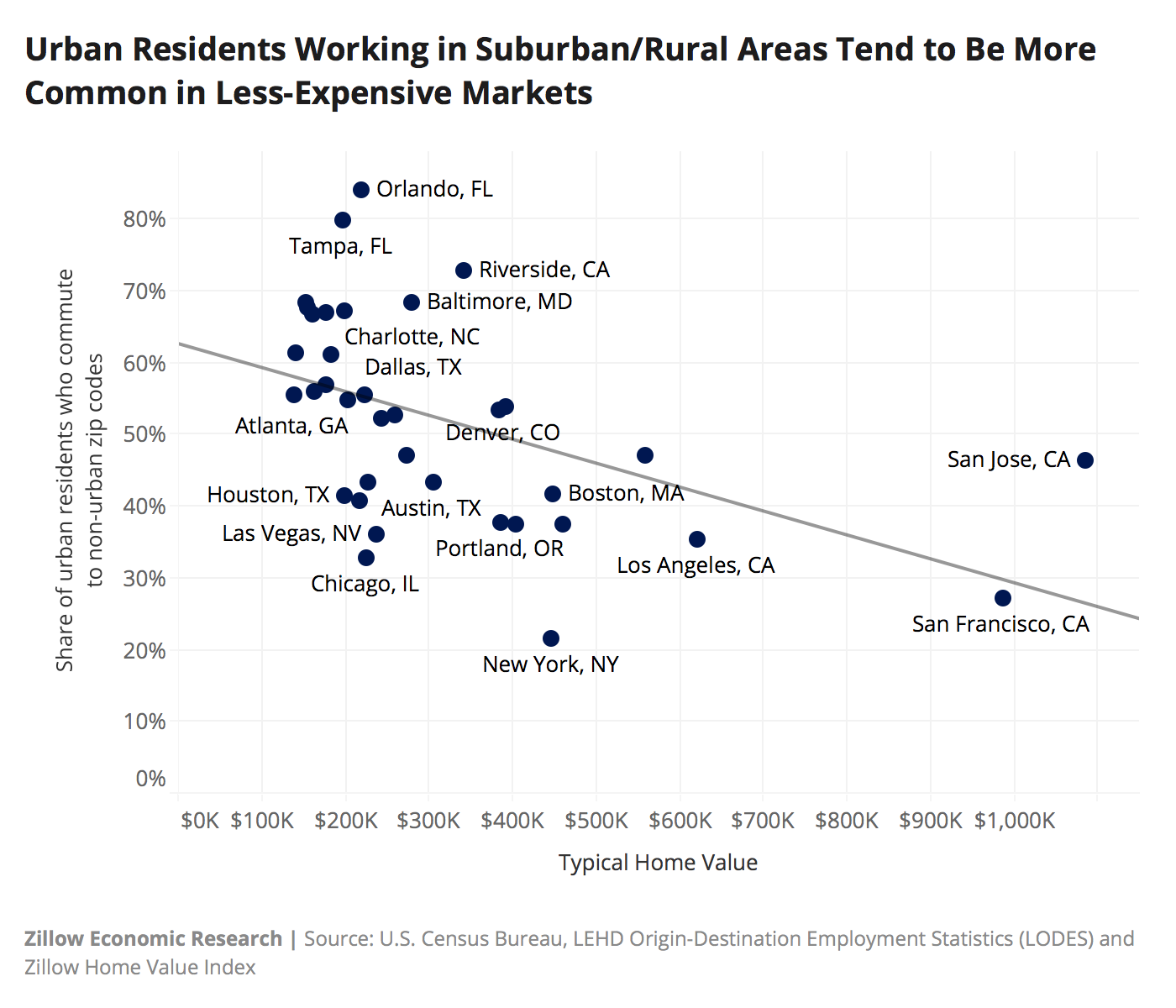The rapid movement towards remote work arrangements in the wake of the coronavirus pandemic raises some interesting questions on the future of workers in urban centers. If workers place less value on living near a downtown job center they no longer need to go to (at least, not as often), will more of them decamp for the suburbs — potentially hollowing out urban centers that had been enjoying a renaissance over the past decade?
It's a valid question, and it's likely too soon to have a definitive answer. But that question also ignores the millions of U.S. workers already living in urban areas not because of their proximity to work, but in spite of it. As of 2017*, 40% of U.S. residents living in urban areas commuted to non-urban ZIP codes for work — or almost 8.2 million workers nationwide — according to an analysis of data from the federal Longitudinal Employer-Household Dynamics Origin-Destination Employment Statistics (LODES) dataset.
In fact, a majority of urban residents work outside the city in 20 of the country’s 35 largest metro areas, including three (Riverside, Tampa and Orlando) where more than 70% of urban residents work in the suburbs or rural areas. In general, areas with more "urban resident/elsewhere worker" citizens tend to be more sprawling and/or more affordable metros compared to the more stereotypically dense and/or expensive coastal areas like New York and San Francisco.
And these reverse commuters are not unique to the younger population. Nationwide, urban residents aged 55+ are almost equally as likely to commute to suburban and rural areas as those 29 and under. And in some metros, including Washington, D.C., the older generation is more likely to look outside densely populated cities for work.
Ultimately, even if remote working options become both more permanent and widespread, it is unlikely that urban movers will completely abandon cities altogether, since they are so much more than job centers. The rich culture, art, and history found in urban centers is not accessible from the suburbs, and even less so from rural areas. The already large population of urban commuters suggests these attitudes will change very slowly, if at all.
Methodology
Zillow used U.S. Census Bureau Longitudinal Employer-Household Dynamics Origin-Destination Employment Statistics (LODES) data to determine the ZIP code of both individuals' home and workplace cut by age groups. *This data is primarily from 2017, but Alaska and South Dakota report 2016 LODES data. Zillow then matched the ZIP codes of home and work locations to urban, suburban, and rural classifications. Urban, suburban and rural classifications are based on survey results where respondents were asked to describe their home area as urban, suburban, or rural, and then extrapolated to all ZIP codes by comparing population density. The population examined for this analysis is those who reside in urban ZIP codes and work in non-urban ZIP codes.
The post More Than 8 Million U.S. Workers Live in Cities, But Don't Work There appeared first on Zillow Research.
via More Than 8 Million U.S. Workers Live in Cities, But Don't Work There


No comments:
Post a Comment